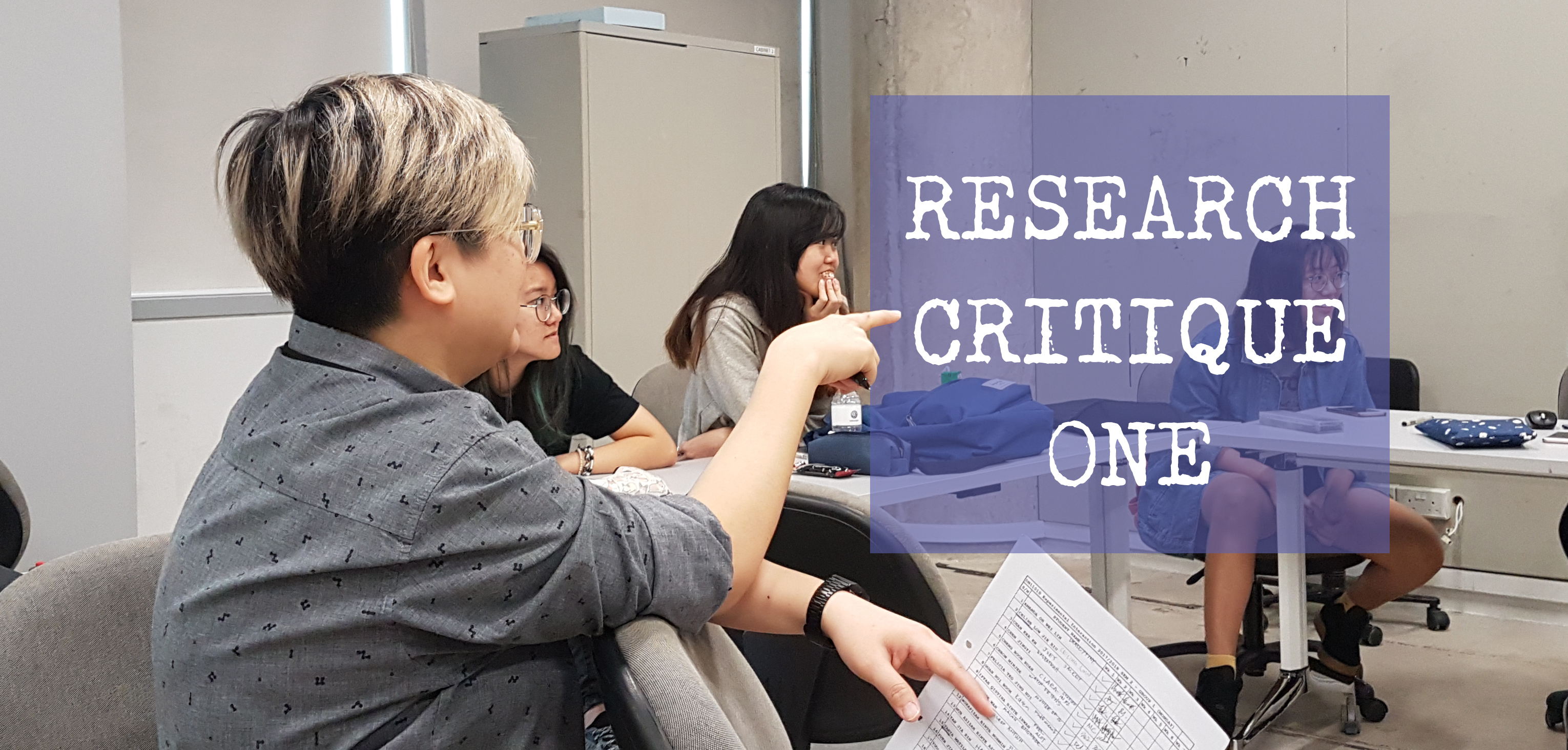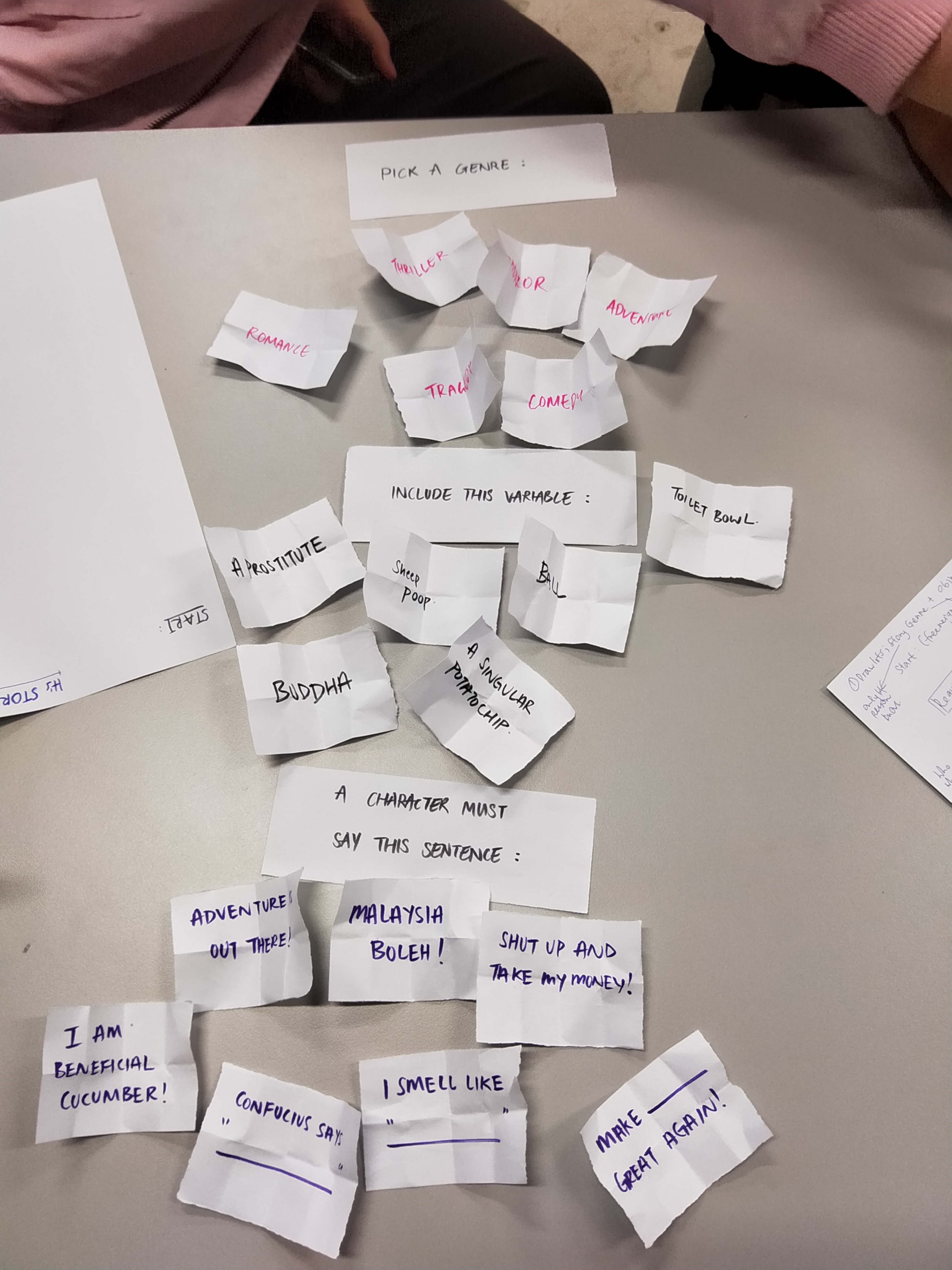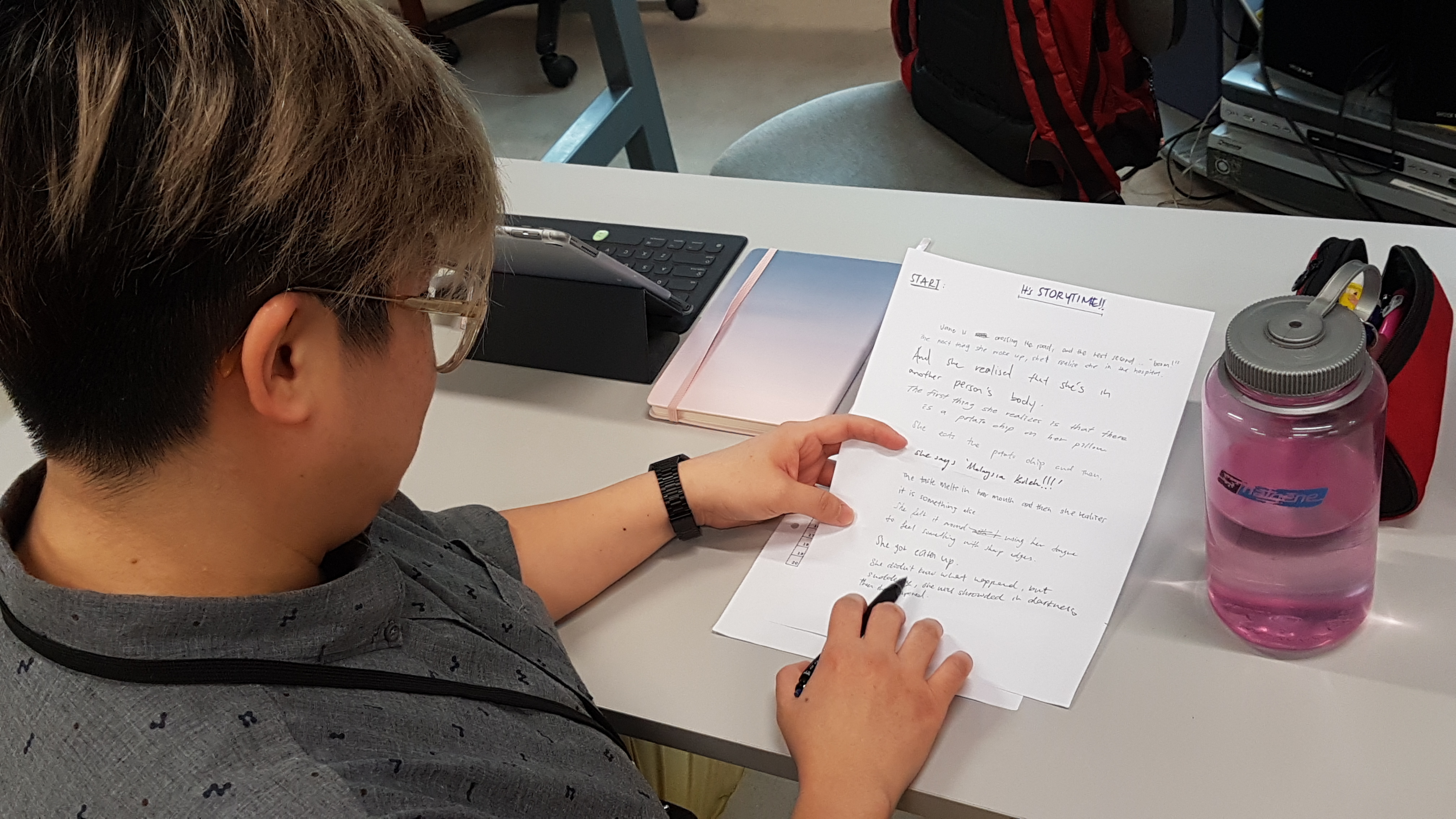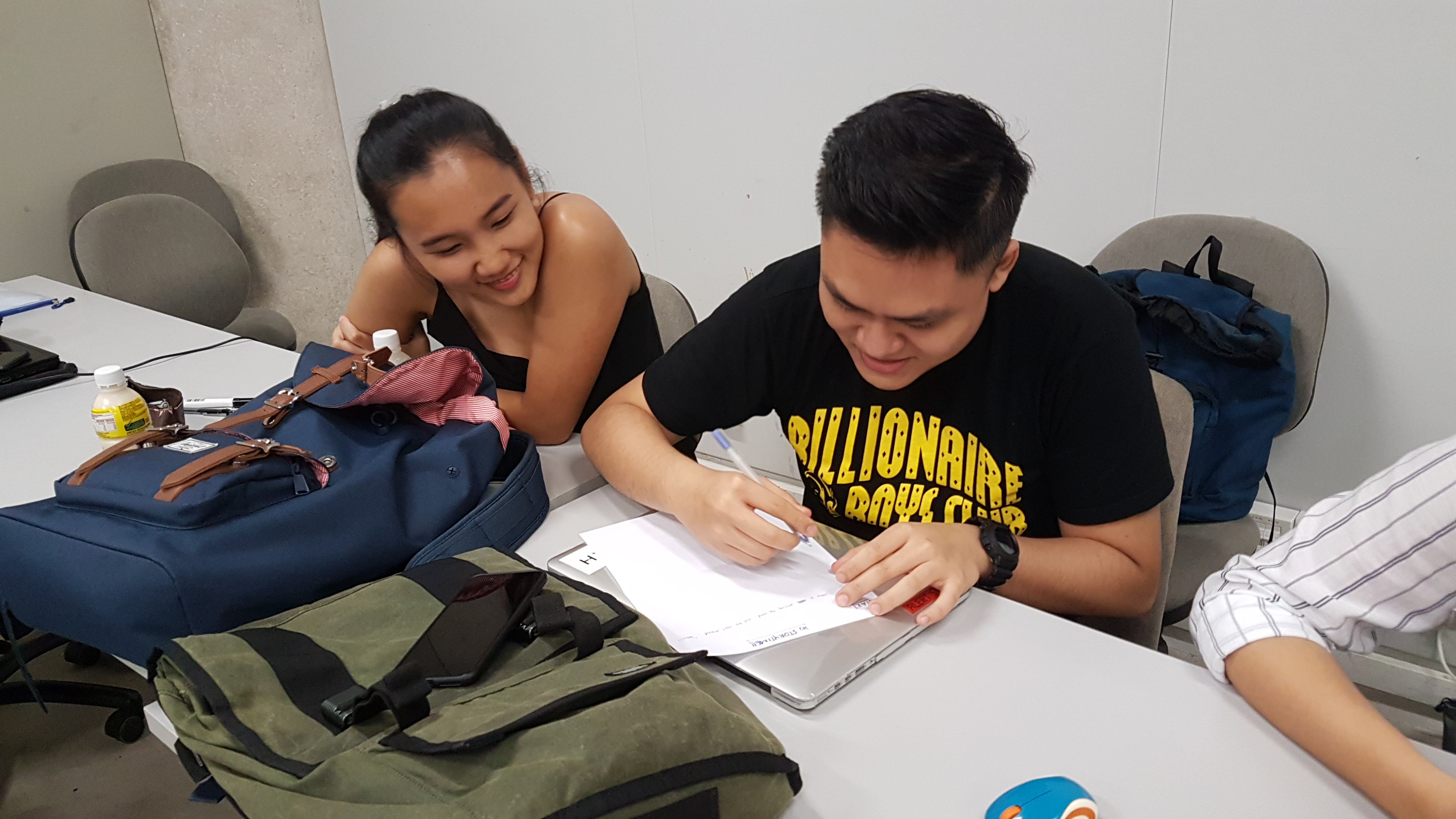It’s Storytime!
We worked on our Micro-Project #2 on 22/01 and managed to execute it on 29/01. Joey, Naomi, Nok Wan and myself created a game that involved everyone in the classroom to create a story together.
Every audience member was allowed to write a maximum of two sentence with a time limit of thirty seconds, in sequential order. One by one, they add on to a story being formed together by their peers before them, and at the very end we get to read what they have written. Instead of allowing the audience to have Ultimate Freedom what could be written, our team decided to give the audience some variables to accomplish. For example, we gave the first audience member to start the story a genre, and gave someone in the middle of the “queue” something to add.
Also, by the end of the story, the audience have to somehow work together and make sure a character disappeared, along with a plot twist.
Compared to the traditional way of writing a story where a writer creates their own world from beginning to end, nothing was planned ahead – even us as the ‘artists’, did not know what would have been the end result. We were as clueless about how it would go and had no pre-assumptions to how it would have ended. As co-creators of a story, everyone had to work together to make sure that each sentence they made linked to the next, along with the assumption of what the previous co-creator was thinking.
Depending on how one would think, a story can take a drastic turn, and eventually affects how the other co-creators will write the story. It was like creating an infinite pathway, but with each different co-creator, a route was then formed, resulting in the finished story.
As Marc Garrett has mentioned in the D.I.W.O article,
“The practice of DIWO allows space for an openness where a rich mixing of components from different sources crossover and build a hybrid experience.”
As mentioned earlier, each co-creator’s contribution could possibly be a dramatic twist. Even though one of our requirements was to create a plot twist, it was evident that what happened down the lane of creation, that what the first co-creator had assumed was not anything like the final outcome. It works the same way vice-versa where a waiting co-creator ends up looking at a piece of work-in-progress that was nothing like they expected. They have to read through everything and decide on a sentence that could create a question in the next person’s head. It was like a constant process of questions and answers not by one person’s hand, but by many: a discussion going on within that one moment of working together without actually conversing.
Our crowd-sourced artwork was certainly different in the sense that it was a literary piece of art. We also gave variables to create a higher level of ‘difficulty’, as a game, but also to guide the ‘players’, also known as co-creators, so they have a rough idea of what to create within 30 seconds.
It was very similar to how the Human Clock made use of co-creator’s ability to create their own pieces to contribute to a bigger project. In our artwork, the audience has their own power to change the story in any way they like, just like how the Human Clock gave their audience the authority to manipulate the picture in any way they wanted, as long as it had the numbers necessary to form the artwork (the necessary ‘variables’ for this piece.)
Like-wise, it was similar to Yoko Ono’s Cut Piece, where co-creator by co-creator, their options would be affected by the one in front of them. In Cut Piece, when someone were to cut a piece of sleeve off and there was no more sleeve to cut, the following person would not be able to cut any more sleeve, and decide to cut another piece of clothing instead. In our artwork, if someone were to mention that a character had already disappeared, then the next few people would not be able to mention a disappearance, and rethink their sentences again.








Recent Comments